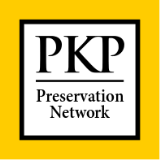Evaluation and Characterization of Wastewater from Tannery industries and their Impact on Water Quality of the Receiving River, Ethiopia
Keywords:
Characterization, Tannery, Evaluation, Water quality, pollutionAbstract
Tannery industries are heavy source of pollution of water body. The objective of this research is to evaluate the current status of physico-chemical properties of tannery wastewater from tannery industries concentrated in Mojo town and their impact on water quality of Mojo River. Accordingly, from seven tanneries, effluents at outlet channel, river water and sediments were collected. Physico- chemical parameters and chromium in samples were analyzed. The results revealed in the ranges of PH (5.85 – 12.04) , TDS (3412 - 4660 mg/L), TSS (158.5 -2162.5.5 mg/L), PO4-3 (0.1 – 0.9 mg/L), SO4-2 (456 – 912 mg/L), NH3-N (31.5 – 358.2 mg/L), NO3− (97.4 – 121.3 mg/L), COD (718 -2380.5 mg/L), BOD5 (706 -2276 mg/L), Cl- (560.9 - 4779 mg/L), S-2(6.4 – 136.1 mg/L) and Phenol (4.3 – 11.7 mg/L). The study also revealed that the concentrations of chromium ranged from ND - 23.43 mg/L, 0.12- 1.6 mg/L and 60.1- 264 mg/Kg in effluents, river water and sediments respectively. The mean value of TDS, TSS, SO42−, NO3− Cl−, ammonia, sulfide, BOD5, COD in wastewater and river water were above the standard of Ethiopian tannery effluent disposal limits and WHO respectively and Cr in friendship tannery effluents and river water at site MS02 and LS01, were also above the standard of Ethiopian tannery effluent disposal limits and WHO standard permissible limits. Similarly, the level of Cr at downstream of river sediment was higher as compared to the standard of USEPA sediment quality guidelines. Generally, this study indicated that the river was polluted by the direct discharge of tannery wastewater. Therefore, discharging of tannery effluents without treatment is worse for the aquatic environment. The researchers had the inference that the tannery industries can adopt the best available technology and management practice before they discharge their effluents into the receiving water body.
References
Dargo H, Ayalew A (2014) Tannery waste water treatment: a review. Int J Emerging Trends in Science Technol 1(9):1488–1494
Chowdhury M, Mostafa MG, Biswas TK, Saha AK (2013) Treatment of leather industrial effluents by filtration and coagulation processes. Water Res Ind 3:11–2
Akan JC, Abdulrahman FI, Ayodele JT, Ogugbuaja VO (2009) Impact of tannery and textile effluent on the chemical characteristics of Challawa River, Kano State, Nigeria. Aust J Basic Appl Sci 3(3):1933–1947
KhanSR, Khwaja MA, KhanS, Kazmi,GhaniH (1999) Environmental impacts and mitigation costs of cloth and leather exports from Pakistan, SDPI Monograph Series M. 12, Islamabad, Pakistan
MILENKOVIC N., DAMJANOVIC M., RISTIC M. Study of heavy metal pollution in sediments from the Iron Gate (Danube River), Serbia and Montenegro. Pol. J. Environ. Stud. 14 (6), 781, 2005.
TANG W., SHAN B., ZHANG W., ZHANG H., WANG L., DING Y. Heavy metal pollution characteristics of surface sediments in different aquatic ecosystems in eastern China: A comprehensive understanding. PLoS ONE. 9, 9, 2014.
Sangodoyin, A.Y.1991 Groundwater and Surface Water Pollution by Open Refuse Dump in Ibadan, Nigeria. Journal of Discovery and Innovations, 3 (1): 24-31
KUNCHEVA L.I., WRENCH J., JAIN L.C., AL-ZAIDAN A.S. A fuzzy model of heavy metal loadings in Liverpool bay. Environ. Modell. Softw. 15, 161, 2000.
S. Melaku, T. Wondimu, R. Dams, and L. Moens (2004). “Simultaneous determination of trace elements in tinishu akaki river water sample, ethiopia, by icpms,” Canadian journal of analytical sciences and spectroscopy, vol. 49, no. 6, pp. 374–384
G. Kebbede (2004). Living with urban environmental health risks: The case of Ethiopia. Ash gate Publishing, Ltd.
Haile R. Amanial (216) Physico Chemical Characterization of Tannery Effluent and Its Impact on the Nearby River, Vol.3 No.3
APHA (1998) Standard Methods for the Examination of Water and Wastewater, 20th edn. American Public Health Association, Washington.
USEPA 2001a. Methods for collection, storage and manipulation of sediments for chemical and toxicological analyses. Technical Manual, EPA-823-B-01-002, Office of Water, Washington, DC
APHA-AWWA-WPCF (2005) Standard Methods for the Examination of Water and Wastewater. American Public Health Association, Washington, D. C 20th ed, New York.
Greenberg A. 2005. Standard Methods for the Examination of Water and Wastewater, American Water Works Association, 9-37, American Public Works Association/Water Environment Federation, USA.
EEPA (2001) Situation Analysis; the Industrial Sector. ESID Project US/ETH/99/068/ETHIOPIA, EPA/UNIDO, Addis Ababa.
Islam BI, Musa AE, Ibrahim EH, et al. 2014. Evaluation and characterization of tannery waste water. J. Forest Prod. Ind. 3:141-150.
WHO (World Health Organization), 2008, Guidelines for drinking-water quality - Volume 1: Recommendations Third edition, incorporating first and second addenda. ISBN 978 92.
Bosnic M, Buljan J, Daniels RP (2000) Regional program for pollution control in the tanning industry US/RAS/92/120 in South East Asia, pp. 1-14
TUREKIAN K.K., WEDEPOHL K.H. Distribution of the elements in some major units of the earth’s crust. Geol. Soc. Am. Bull. 72, 175, 1961.
USEPA 1999. Screening Level Ecological Risks Assessment Protocol for Hazardous Waste Combustion Facilities. Appendix E: Toxicity Reference Values. EPA 530-D99-001C, vol.3.
Saritha, B. and Meikandaan, T.P. 2013. Treatability study of tannery effluent by enhanced primary treatment, Int. J. Mod. Engin. Res., 3(1): 119-122.
Downloads
Published
Issue
Section
License
Copyright (c) 2021 Tizazu Hailemariam Meneberu

This work is licensed under a Creative Commons Attribution-NonCommercial 4.0 International License.






.png)


